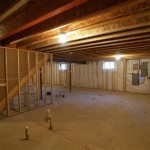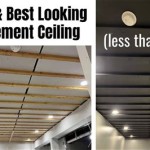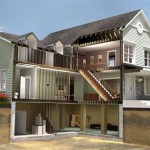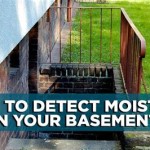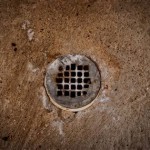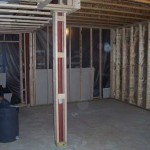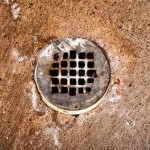What Insulation Should I Use For My Basement Ceiling?
Insulating a basement ceiling offers several benefits, including improved energy efficiency, enhanced comfort, and noise reduction. Selecting the appropriate insulation material is crucial for maximizing these advantages and ensuring the longevity of the insulation itself. Several factors influence the ideal insulation choice for a basement ceiling, including the type of foundation, climate conditions, budget constraints, and desired R-value. This article will explore various insulation options, their pros and cons, and critical considerations for making an informed decision.
Understanding the Importance of Basement Ceiling Insulation
Basements, by their nature, are often cooler than the upper levels of a house. Uninsulated basement ceilings allow heat to escape from the living areas above, leading to higher heating bills in the winter. Conversely, in the summer, a lack of insulation allows cool air to dissipate downwards, increasing the demand on air conditioning systems. Properly insulating the basement ceiling creates a thermal barrier, preventing heat transfer and maintaining a more consistent temperature throughout the home. This translates into lower energy consumption and reduced utility costs.
Beyond energy efficiency, basement ceiling insulation plays a significant role in improving overall comfort. A cold basement floor can make the rooms above feel drafty and uncomfortable, even if the thermostat is set at a reasonable temperature. By reducing the temperature differential between the basement and the living areas, insulation creates a more balanced and comfortable indoor environment. Furthermore, insulation materials can help dampen sound transmission, reducing noise from footsteps and activities in the basement from reaching the upper floors, and vice versa.
Before selecting an insulation type, it's vital to address any moisture issues in the basement. Leaks, condensation, or high humidity levels can compromise the effectiveness of insulation and lead to mold growth. Any water intrusion problems must be resolved before installing insulation. Consider installing a vapor barrier if the basement is prone to moisture. This barrier helps prevent moisture from migrating into the insulation, preserving its thermal performance and preventing damage.
Exploring Different Insulation Options
Several insulation materials are suitable for basement ceilings, each with its unique properties and advantages. The most common options include fiberglass batts, rigid foam boards, spray foam insulation, and mineral wool batts. The choice depends on factors like cost, ease of installation, R-value requirements, and moisture resistance.
Fiberglass Batts: Fiberglass batts are a widely used and relatively inexpensive insulation option. They are made from spun glass fibers and are available in various thicknesses and R-values. Fiberglass is effective at reducing heat transfer and is non-combustible. However, fiberglass batts are susceptible to moisture damage and can lose their insulating properties if they become wet. Proper installation is critical to ensure a tight fit and prevent air gaps, which can reduce their effectiveness. It is also crucial to wear protective gear, including gloves, a mask, and eye protection, when handling fiberglass insulation.
Rigid Foam Boards: Rigid foam boards, such as expanded polystyrene (EPS), extruded polystyrene (XPS), and polyisocyanurate (polyiso), offer higher R-values per inch compared to fiberglass. These boards are moisture-resistant and can provide a continuous layer of insulation, minimizing thermal bridging. Rigid foam boards are often used in conjunction with other insulation materials to achieve desired R-values. EPS is the least expensive option, while polyiso offers the highest R-value but is also the most expensive. When installing rigid foam boards, it is essential to seal the seams with tape to prevent air leakage. Some foam boards are flammable and require a fire-rated covering, such as drywall.
Spray Foam Insulation: Spray foam insulation is a highly effective option that provides both insulation and air sealing in one step. There are two main types of spray foam: open-cell and closed-cell. Open-cell foam is less expensive and has a lower R-value per inch, but it allows moisture to pass through. Closed-cell foam is more expensive and has a higher R-value, and it is also moisture-resistant. Spray foam insulation is applied by trained professionals and can fill even the smallest gaps and cracks, creating a tight seal. This makes it an excellent choice for basements with irregular surfaces or difficult-to-reach areas. However, spray foam insulation can be more expensive than other options.
Mineral Wool Batts: Mineral wool, also known as rock wool or slag wool, is made from recycled materials and offers excellent thermal and acoustic performance. Mineral wool batts are similar to fiberglass batts in appearance and installation, but they are more resistant to moisture and fire. Mineral wool is also denser than fiberglass, providing better sound insulation. While mineral wool is generally more expensive than fiberglass, its superior performance and durability make it a worthwhile investment in some applications.
Key Considerations for Choosing Insulation
Selecting the right insulation for a basement ceiling involves considering several factors beyond just the R-value and cost. Moisture management, fire safety, ease of installation, and local building codes all play a crucial role in making an informed decision.
Moisture Management: As mentioned earlier, moisture is a significant concern in basements. Choosing an insulation material that is resistant to moisture or incorporating a vapor barrier into the insulation system is critical to preventing mold growth and maintaining the insulation's effectiveness. In humid climates or basements prone to moisture, closed-cell spray foam or rigid foam boards are often preferred over fiberglass batts. A vapor barrier can be installed on the warm side of the insulation (the side facing the living space) to prevent moisture from migrating into the insulation.
Fire Safety: Fire safety is another important consideration, especially for exposed insulation in a basement ceiling. Some insulation materials, such as fiberglass and mineral wool, are inherently fire-resistant. Others, such as certain types of rigid foam boards, are flammable and require a fire-rated covering, such as drywall. Check local building codes for specific requirements regarding fire safety and insulation materials. Using a fire-rated insulation material or covering the insulation with a fire-resistant barrier can help protect the home and its occupants in the event of a fire.
Ease of Installation: The ease of installation is a factor to consider, especially for DIY projects. Fiberglass batts and mineral wool batts are relatively easy to install, although proper techniques are essential to ensure a tight fit and prevent air gaps. Rigid foam boards can also be installed by homeowners, but cutting and fitting the boards around obstructions can be time-consuming. Spray foam insulation typically requires professional installation due to the specialized equipment and expertise needed. Consider the level of experience and available tools when choosing an insulation material for a DIY project.
R-Value Requirements: The required R-value for basement ceiling insulation depends on the climate zone and local building codes. Higher R-values are generally recommended in colder climates to provide better insulation and reduce energy consumption. Consult local building codes and energy efficiency guidelines to determine the appropriate R-value for a specific location. Different insulation materials offer different R-values per inch of thickness, so choose a material that can achieve the desired R-value within the available space.
Cost: The cost of insulation materials and installation can vary significantly. Fiberglass batts are generally the least expensive option, while spray foam insulation is typically the most expensive. Rigid foam boards and mineral wool batts fall somewhere in between. Consider the long-term cost savings associated with improved energy efficiency when evaluating the cost of different insulation options. A more expensive insulation material with a higher R-value may pay for itself over time through reduced energy bills.
Accessibility: Consider the accessibility of the basement ceiling. If there are numerous pipes, ducts, or wiring running along the ceiling, it may be more difficult to install certain types of insulation. Spray foam insulation can easily fill these gaps, but other types of insulation may require more cutting and fitting. Ensure that the chosen insulation method allows for easy access to utilities for maintenance and repairs.
Presence of Radon: If radon is a concern in the area, consider the impact of insulation on radon levels. While insulation itself does not eliminate radon, it can help to reduce air leakage, which can affect radon concentrations. Radon mitigation systems may be required regardless of the type of insulation used. Test the basement for radon levels before and after installing insulation to ensure that radon levels are within acceptable limits.
By carefully considering these factors and weighing the pros and cons of different insulation materials, homeowners can make an informed decision about the best insulation for their basement ceiling. Choosing the right insulation can significantly improve energy efficiency, comfort, and the overall value of the home.

Should I Insulate My Basement Ceiling And Walls Aire Serv

What Is Basement Ceiling Insulation And It Worth

Best Insulation For Basement Ceilings And Why You Need It

Should I Insulate My Basement Constellation

Basement Ceiling Insulation Interior Inspections Internachi Forum

How To Soundproof A Basement Ceiling

Basement Insulation Upstate Spray Foam

8 Pros And Cons Of Basement Ceiling Insulation

The Pros And Cons Of Insulating Basement Ceiling Should You Do It

Basement Insulation Problems 4 Things That Can Cause You Troubles
